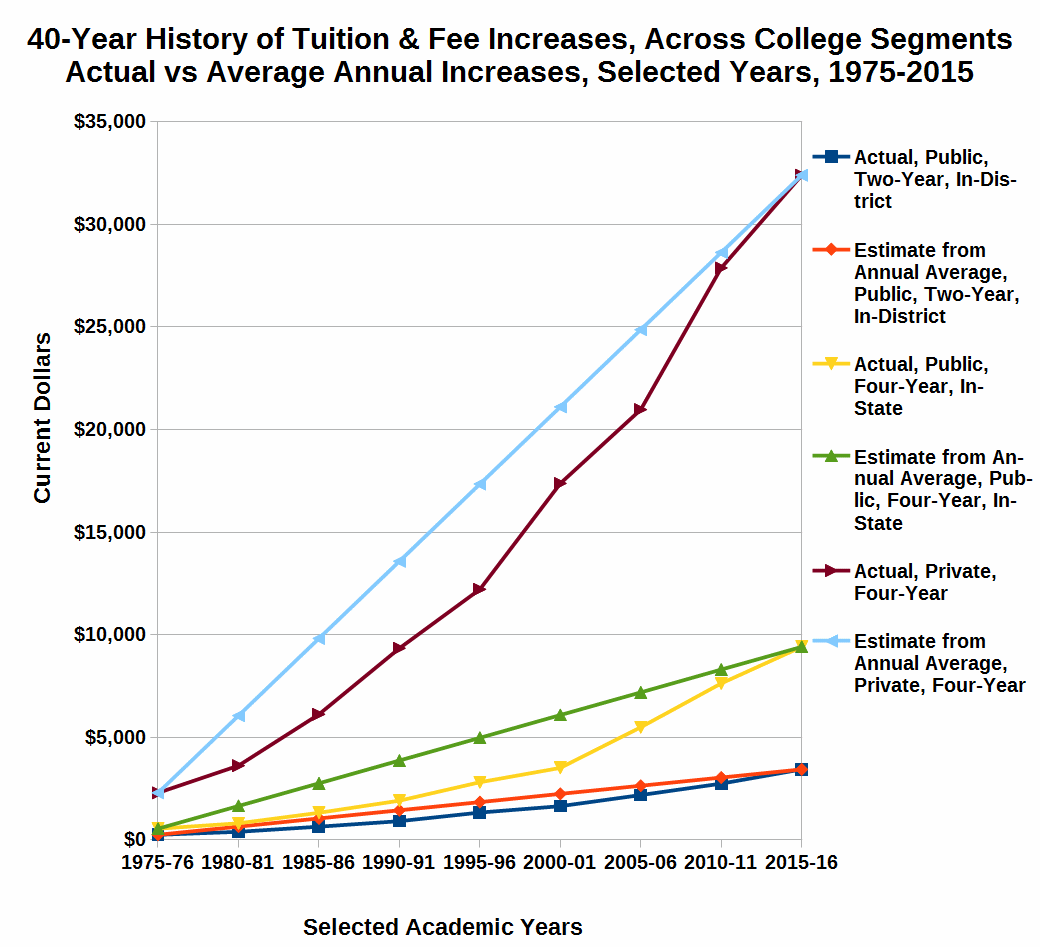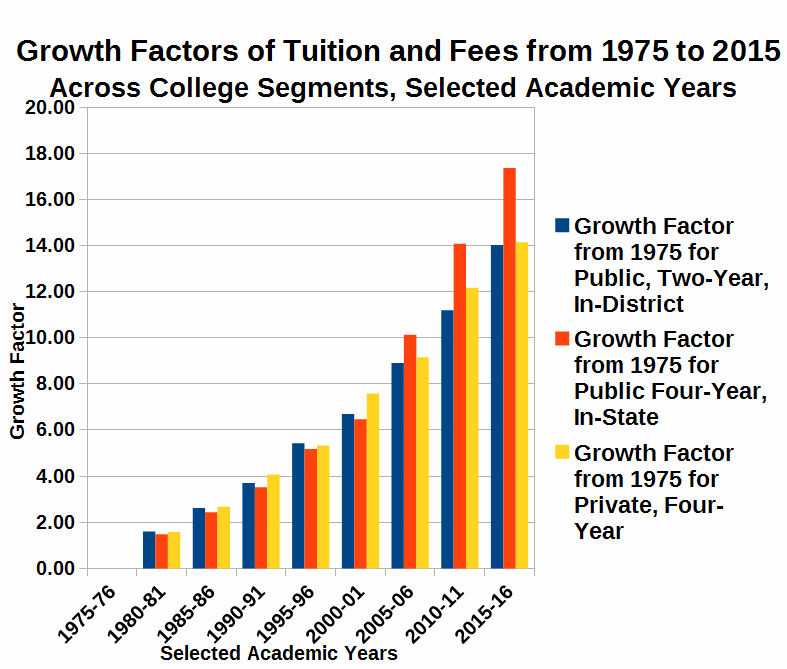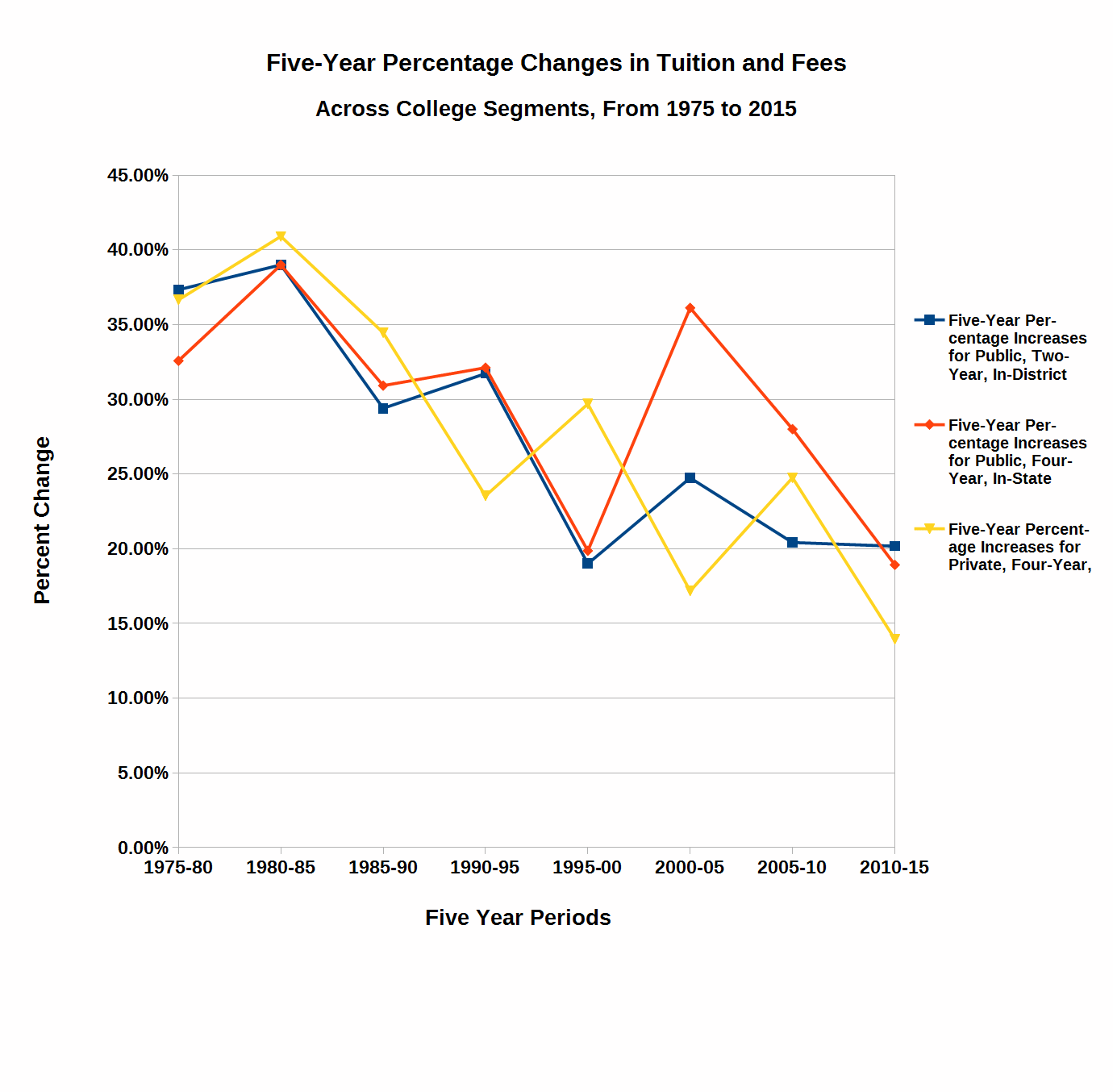
I believe the Commercialization of Higher Education is one of the many dangerous crises facing American higher education in the 21st century. Everyone knows that higher education costs money to operate. It’s also no surprise that those costs keep going up every year. What may surprise many people is that since the earliest days of American Higher Education, colleges have never really been able to operate on the combination of funds that they charge students or the support they receive from public governmental sources. Even in their earliest days, the American Colonial Colleges had to resort to fundraising to supplement the budgetary shortfalls from student charges and public support. In today’s world, the combined sources of student charges, public support and fundraising are still not enough.

In a previous post A New Millennium – The Same Old Story, Part II, I introduced the idea that the Commercialization of Higher Education posed a serious threat to the academy by citing Derek Bok’s seismic work Universities in the Marketplace: The Commercialization of Higher Education. Bok served as President of Harvard University from 1971 to 1991, and as Interim President from 2006 to 2007, after a faculty no-confidence vote against Lawrence Summers, and his abrupt departure.

President Bok is known to be something of an enigma. His book Universities in the Marketplace shows him to be a staunch traditionalist on some higher education questions. On the other hand, Bok blisteringly criticizes many aspects and actions of the academy in his books Our Overachieving Colleges and Higher Education in America.

In his book Universities in the Marketplace, Bok wears a traditionalist’s hat. He warns higher education about a monster hiding in their closet. The monster Bok denounces is the eagerness with which colleges and universities seem ready to “make a buck” wherever they can. I agree with him up to a point.

As I have studied the situation, I believe that many colleges and universities felt that they were pushed into a pit from which there are no avenues of escape.
In 2016, I began a series of posts on the business model of higher education with the provocative title The Business Model of All of Higher Education is Broken.

American IHEs without fundraising and other sources of revenue is like trying to row a leaking boat across a lake. You’ll never make it. Image courtesy of Presenter Media.
In the opening paragraph of that post, I made the claim that in my fifty years in higher education, I never saw a public or private, non-profit institution of higher education cover “their educational and general costs with just tuition and fees.” Trying to do so is like trying to row across a lake in a rowboat with a large hole in it. Colleges and universities have an inherent structural operating deficit built into their fiscal models.
In the aforementioned post, I identified the five sources of revenue that institutions of higher education (IHEs) have available to them:
-
- Tuition and fees
- Fundraising, advancement or development efforts
- Endowment income, appreciation, interest or dividends
- Auxiliary enterprises
- Governmental appropriations (usually reserved for public institutions)

Not appearing in this list is a magical money tree that drops money like leaves in the fall. Borrowing a phrase from an old television commercial, IHEs have “to make money the old fashion way. They have to earn it.” The most traditional avenue is charging students tuitions and fees for educational services such as courses, credits, certificates, and degrees. Prior to the formal separation of higher education into public and private sectors, many IHEs were the recipients of governmental appropriations (funding). Today, governmental appropriations are almost exclusively reserved for public institutions.

I began writing this post with what I thought was going to be a simple agenda. Consistent with my previous claim that public and private, non-profit American IHEs can’t cover their educational and general expenditures with just tuition and fees, it would follow that the difference would have to be made up from other sources.
In 2016 when I was working on the previously mentioned series The Business Model of All of Higher Education Is Broken, one resource that I relied on for data was the Delta Cost Project managed by the American Institutes for Research. Their data reinforced my findings from my research on IPEDS data from the 1980s.

Unfortunately, it appears that the Delta Cost Project was abandoned several years ago. Therefore, the best source of current data is from IPEDS or the annual audits of the IHEs themselves. The difficulty with the IPEDS data is that the reporting categories are different than the ones used by the Delta Cost Project, making it difficult to match up the results. The problem with looking at the annual audits of IHEs is obviously the time and availability factors. Public institutions are required to publish their annual audits. Private institutions are encouraged, but not required to publish their audits. I don’t have enough time as one researcher to track down thousands of audit reports.

As noted in my opening paragraph, except for the very early days of American higher education, the revenue source Government Appropriations is strictly reserved for public institutions. I will be dealing with how well that source of revenue is holding up in a future post entitled The Shrinking Public Support of Higher Education.
Two sources of revenues for American IHEs, Fundraising, advancement or development efforts and Endowment income, appreciation, interest or dividends, are closely related and highly correlated. In planning this post, I believed that I could dismiss these sources of revenue as inadequate to make up the shortfall in a couple of short paragraphs and then move on to the topic of this post. I was wrong! As I began writing, the couple of short paragraphs turned into a long post in and of itself.

In the opening paragraph of this post, I alluded to the necessary fundraising efforts of Colonial Colleges to make ends meet. In today’s world, the pressure to raise outside funds has increased many times over. In 2018, the most recent year for which data is available, voluntary support for all of American higher education was $46.73 Billion. According to the Council for Aid to Education (CAE), this represented a 7.2% increase from 2017. Both of these statistics sound impressive until you look inside the numbers.

Unfortunately, the distribution of gifts is very uneven. It is the story of the great divide between the haves and the have nots. The top 20 fundraising institutions raised $13.26 Billion (28.4% of all voluntary support for higher education). These 20 institutions represent less than 0.6% of all US degree-granting IHEs, public and non-profit private, required to submit data to the federal Department of Education’s National Center for Educational Statistics (NCES).
What about all the other colleges and universities? According to the Council for the Advancement and Support of Education (CASE), more than two-thirds of all funds raised (68% – $32 billion) this past year went to public and private doctoral/research universities. These institutions are raising billions of dollars in multi-year campaigns heavily focused on capital expansion, research programs, and endowments.

According to the same report, less than one-half of one percent of the funds raised (0.4% – $0.19 billion) went to community colleges. Even though community colleges educate more than 40% of all American undergraduates annually, and the largest proportion of first-generation, low income, minority, and at-risk students, these institutions are almost invisible to the donors who regularly contribute to American higher education.

Funds raised by IHEs typically go into two different accounting pots which are, in turn, divided into two pots. The first division of donations consists of two pots that are labeled restricted and unrestricted gifts. Although IHEs routinely ask donors to give contributions for specific purposes, donors may designate the assignment of their donations to particular projects (restricted gifts) or leave the assignment to the discretion of the institution (unrestricted gifts).

Funds from each of these two pots are further divided into two more pots. The first of these pots is called the current fund, which is used to pay for current operating expenses or to balance the budget in the year in which the donation is received. The second is called endowment, which consists of funds reserved for future spending. These funds comprise the equivalent of a savings account or a rainy day fund for the institution.
The second of the closely related sources of revenue for colleges and universities was Endowment income, appreciation, interest or dividends. Gifts to institutions are not always in the form of cash. Donors may give physical property, stocks, bonds, or gifts of services. These gifts are sometimes called paper or non-liquid assets. Other than gifts of service, the perceived value of these gifts is the amount of money the institution could get by “cashing in” or selling the asset.

Appreciation is a different ballgame altogether. It is the increase in the appraised value of a property. It only adds to the real wealth of an institution in two ways. The first is by selling the property and reaping the harvest of that increased value. Instead of disposing of the asset outright, an institution could borrow against the appraised value of the asset. Borrowing against an asset has two disadvantages. The first is that the loan is now a liability to the institution which must be repaid at some point. In addition, loans usually carry the liability of ongoing interest charges which must be paid periodically. The second disadvantage is that as collateral for a loan, the use of that asset may be restricted partially or fully until the loan is repaid.
Depending upon whether the initial gift of stocks and bonds was restricted or unrestricted, the institution may have to restrict the use of resultant appreciation, interest or dividends to specific projects.

Turning our attention to endowments, we run into a new set of problems. We have an interesting dilemma: The public and non-profit private institutions can’t legally show a profit in annual audits or on their cash flow sheets. However, if they continually expend more than they take in their revenues, they will eventually fail (as many have). How do we handle these accounting anomalies? Non-profit organizations can legally hold savings accounts for future spending. Rainy day accounts for IHEs are actually encouraged, not only by federal and state law but by most educational pundits and commentators.

If that is the case, what’s the current state of endowments for IHEs? It is also a land divided. The chasm between the haves and the have nots in endowments is just as great as the one that exists in the land of fundraising. The rich get rich and the poor get poorer. There are two ways to measure endowments. You could rank institutions in terms of total endowment in current dollar value, or you could measure it in terms of the current dollar value of endowment per student enrolled.
 Which measure you chose probably depends upon your view of how endowment should be used. If you believe that endowment should strictly be dedicated to assisting students in attending a particular institution, you will use the value of endowment per student enrolled. If you are more open to taking a broad, holistic view of the health of an institution, you will look to the total dollar value of the endowment. It doesn’t really matter which way you look at the top institutions. You will find many of the same names. The top 30 institutions by the total endowment are in the list of the 100 institutions of endowment per student and vice versa.
Which measure you chose probably depends upon your view of how endowment should be used. If you believe that endowment should strictly be dedicated to assisting students in attending a particular institution, you will use the value of endowment per student enrolled. If you are more open to taking a broad, holistic view of the health of an institution, you will look to the total dollar value of the endowment. It doesn’t really matter which way you look at the top institutions. You will find many of the same names. The top 30 institutions by the total endowment are in the list of the 100 institutions of endowment per student and vice versa.

Why did I choose the number 30? It happens to represent approximately 1% of the public and private, nonprofit 4-year colleges in the United States. In the last several presidential elections there has been much discussion about the wealthiest 1% in the United States. So I thought I would follow the lead of Forbes Magazine which in July, 2016, published the article How the Wealthiest 1% of Colleges Own Higher Education. Forbes’ conclusion in 2016 was that the top 30 colleges and universities held over 52% of all endowment funds. Forbes has not updated their data. From my calculations, using the most recent 2018 data available from the National Association of College & University Business Officers (NACUBO) and the Teachers Insurance and Annuity Association of America (TIAA), the top 30 colleges may have increased their holdings to almost 54% of all endowment funds.
One quick aside: My 2018 top 30 list differs by two colleges from Forbes’ 2016 top 30 list because two institutions just outside the Forbes’ list received very large gifts designated for endowment during the past two years. If you pull back your focus just a little, the top 100 schools (just over 3% of colleges) in both 2016 and 2018 held almost 80% of all endowment funds. In 2018, every one of the top 100 colleges had an endowment valued at more than $1 billion. Pulling back a little further, in both years the bottom 20% of institutions held less than 1% of all endowment funds.

In the face of a structural operating deficit, declining public support, and a lack of sufficient endowments or donations to fill-in these gaps, many IHEs felt they had to turn to other sources of revenue. Where could they find these sources? The two most obvious solutions are to resort to auxiliary enterprises or to sell off assets.

Auxiliary enterprises provide goods or services to college personnel or the general public on a fee-charged basis. These enterprises are meant to be profit-making, or at the least self-supporting. In some circumstances, selling off assets can be considered a last-ditch effort. Many view it as a final desperate action before closure.
The major decisions for both avenues involve what properties or services can or should colleges offer. I will take up that question in my next post, The Commercialization of Higher Education – Part II.













